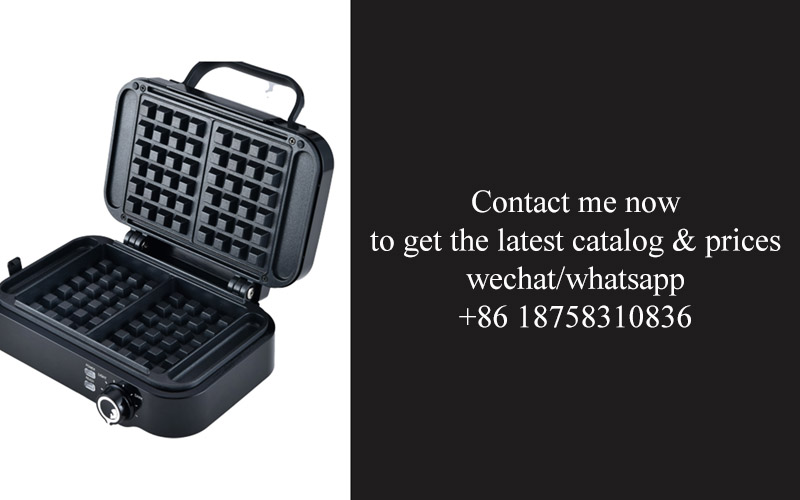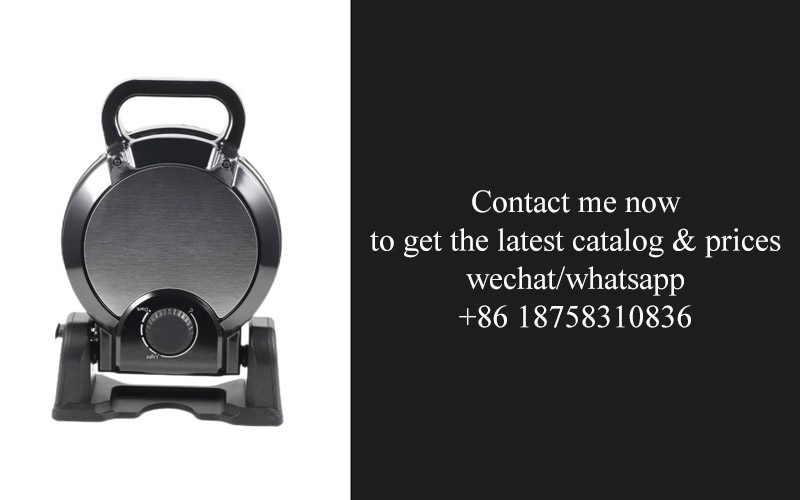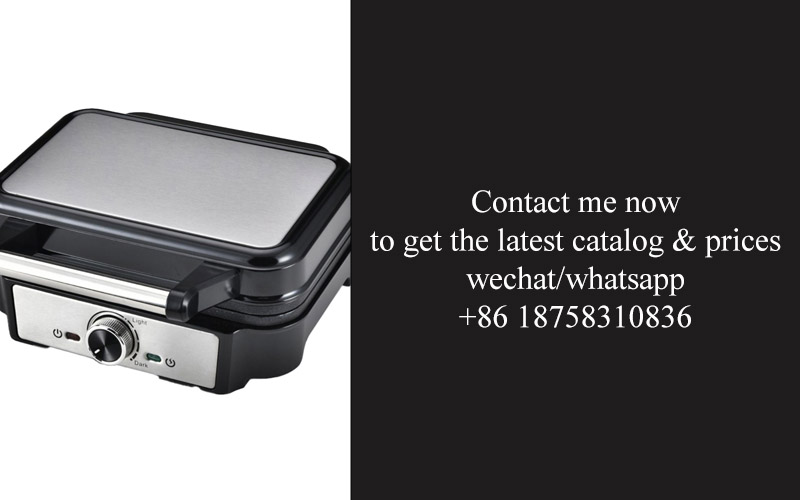Address
304 North Cardinal
St. Dorchester Center, MA 02124
Work Hours
Monday to Friday: 7AM - 7PM
Weekend: 10AM - 5PM
Address
304 North Cardinal
St. Dorchester Center, MA 02124
Work Hours
Monday to Friday: 7AM - 7PM
Weekend: 10AM - 5PM

In this ever-evolving culinary landscape, the demand for high-quality kitchenware has surged. Home cooks and professional chefs alike are seeking durable, efficient, and health-conscious solutions to elevate their cooking experiences. As the heart of any kitchen, cookware has transcended mere utility, becoming a reflection of personal style and culinary expertise. This exploration delves into the intricacies of the medical grade stainless steel basket factories, highlighting their innovations, quality control measures, market insights, and the profound impact on both the environment and the consumer. Join us as we uncover the challenges and opportunities that lie ahead in shaping the future of kitchenware.
The world of kitchenware has undergone a remarkable transformation over the centuries, evolving from simple, rustic tools to sophisticated, high-tech appliances. From the humble wooden spoon to the sleek, smart oven, the evolution of kitchenware reflects not just technological advancements but also shifting cultural norms and consumer expectations.
In the early days, kitchenware was largely utilitarian, crafted from materials readily available in the local environment. Pottery, stone, and wood were the dominant materials, serving basic cooking and food storage needs. The focus was on functionality over form, with minimal decoration and a strong emphasis on durability.
As civilizations progressed, so did the sophistication of kitchenware. The invention of metalworking techniques allowed for the creation of more durable and versatile tools.,,。Cooking pots and pans became more refined, with designs that improved heat distribution and cooking efficiency.
The Industrial Revolution marked a significant turning point in the history of kitchenware. Mass production techniques made kitchenware more accessible to the general population, and new materials like glass and ceramic entered the market, offering a wider range of options. The advent of the refrigerator and electric appliances revolutionized the way food was stored and prepared, leading to more convenience and a greater variety of recipes.
In the 20th century, kitchenware continued to evolve at a rapid pace. Plastic became a popular material due to its non-stick properties and lightweight nature. Non-reactive cookware made cooking healthier, as it reduced the transfer of harmful chemicals into food. The introduction of stainless steel brought a new level of durability and elegance to kitchenware, with its sleek finish and resistance to rust and corrosion.
Today, kitchenware has become a blend of tradition and innovation. Traditional techniques are often combined with modern materials and design principles, resulting in kitchenware that is both aesthetically pleasing and highly functional. Smart kitchen gadgets, such as Bluetooth-enabled kitchen scales and sous-vide machines, have become increasingly popular, offering precision and convenience to the home chef.
The evolution of kitchenware has been driven by several key factors. One is the desire for convenience, as people have less time to spend in the kitchen due to busy lifestyles. Another is the quest for healthier eating habits, which has led to the development of cookware that is non-toxic and easy to clean. Additionally, the rise of foodie culture has fueled a demand for high-quality, unique, and visually appealing kitchenware.
Moreover, sustainability has become a major consideration in the kitchenware industry. Manufacturers are increasingly using eco-friendly materials and sustainable production methods to minimize their environmental impact. This shift towards sustainability is not only good for the planet but also resonates with consumers who are more conscious of their ecological footprint.
The evolution of kitchenware has also been influenced by globalization. As people travel more and expose themselves to different cuisines and cooking techniques, they bring back ideas and ingredients that inspire new kitchenware products. This cultural exchange has led to a diverse and dynamic market, where kitchenware can range from the ultra-modern to the traditionally rustic.
In summary, the evolution of kitchenware is a testament to human ingenuity and adaptability. It has mirrored the changes in society, technology, and consumer behavior over time. As we continue to innovate and refine our cooking tools, the future of kitchenware promises to be even more exciting, offering solutions that not only enhance our culinary experiences but also reflect our values and aspirations.

The kitchen, once a realm of simple pots and pans, has transformed into a culinary battleground where chefs and home cooks alike seek the edge of high-quality cookware. The demand for top-tier kitchenware has surged, driven by a confluence of factors that reflect a shift in consumer values and expectations.
As health consciousness grows, so does the demand for cookware that promises not just convenience but also nutritional integrity. People are increasingly aware of the impact their cooking methods can have on the flavor and nutritional content of their meals. Non-stick coatings, while convenient, have come under scrutiny for potential health risks, leading many to seek alternatives that are both safe and effective.
Modern kitchens are no longer just places for meal preparation; they are hubs of culinary exploration and entertainment. The rise of cooking shows and social media influencers has inspired a generation of home chefs who are not afraid to experiment with different cuisines and cooking techniques. High-quality cookware is seen as an essential tool for these culinary adventurers, enabling them to achieve the same results as professional chefs.
Durability is another key factor in the demand for premium cookware. The idea of investing in a set of pots and pans that will last a lifetime has become increasingly appealing. Consumers are willing to pay a premium for cookware that promises to withstand the rigors of daily use, from high-heat searing to the gentle simmering of delicate sauces.
The environmental movement has also played a significant role in shaping the demand for high-quality cookware. As more people become concerned about the impact of their purchases on the planet, they are looking for sustainable and eco-friendly options. Cookware made from recycled materials or those that are designed to be easily recyclable at the end of their life cycle are becoming more popular.
Functionality and aesthetics have merged to create a new standard for cookware. Modern consumers not only want their cookware to perform well but also to look good. The sleek designs of professional-grade cookware are now being embraced by home cooks who value the visual appeal of their kitchenware as much as its performance.
The convenience factor cannot be overlooked. The demand for cookware that reduces cleanup time, such as those with non-reactive surfaces or those that come with easy-to-use features like pour spouts and stay-cool handles, is on the rise. This is particularly true among busy professionals and families who seek to maximize their time and effort in the kitchen.
Moreover, the versatility of high-quality cookware is a major draw. Cookware that can handle a wide range of cooking methods—from searing and sautéing to boiling and baking—allows for greater culinary exploration and creativity in the kitchen. This versatility is especially attractive to those who enjoy cooking a variety of dishes and want to be prepared for any culinary challenge.
The demand for high-quality cookware is also influenced by the desire for precision and control in cooking. Cookware that provides even heat distribution and precise temperature control is highly sought after, as it ensures that food is cooked to perfection without burning or overcooking.
Lastly, the demand is being fueled by the globalization of cuisine. As people travel more and expose themselves to diverse culinary traditions, they often bring these flavors and techniques back home. High-quality cookware that can handle these diverse cooking styles is in high demand, as it allows for the reproduction of these exotic dishes with ease.
In summary, the demand for high-quality cookware is a multifaceted phenomenon that reflects the evolving needs and aspirations of consumers. It is a testament to the changing landscape of the kitchen, where the tools of the trade are as important as the skills and creativity of those who wield them.

The medical grade stainless steel advantage is a game-changer in the cookware industry, offering a blend of superior quality, durability, and health benefits that have become increasingly sought after by discerning consumers. Here’s a closer look at why this material stands out:
Superior Corrosion ResistanceMedical grade stainless steel is renowned for its exceptional corrosion resistance. Unlike traditional steel, which can rust and degrade over time, medical grade stainless steel maintains its integrity, even when exposed to harsh cooking conditions and acidic foods. This longevity ensures that your cookware will last for years, providing a cost-effective and sustainable option for kitchen enthusiasts.
Hygiene and SafetyThe non-porous surface of medical grade stainless steel makes it an ideal material for cookware. It doesn’t absorb odors, flavors, or bacteria, which means your food will remain uncontaminated and your cookware will be easy to clean. This is particularly important for health-conscious consumers who want to minimize the risk of foodborne illnesses.
Even Heat DistributionOne of the key advantages of medical grade stainless steel is its ability to distribute heat evenly across the entire surface of the cookware. This ensures that your food cooks uniformly, reducing the likelihood of burning or undercooking. Whether you’re searing a steak or simmering a sauce, the even heat distribution makes for a more consistent and delicious culinary experience.
Stain ResistanceMedical grade stainless steel is also highly resistant to stains, which means your cookware will retain its sleek appearance for a longer period. This is a significant advantage for those who value the aesthetic appeal of their kitchenware. Unlike some other materials that can easily show wear and tear, medical grade stainless steel maintains its shine and luster.
Non-ReactiveUnlike aluminum or cast iron cookware, medical grade stainless steel does not react with acidic or alkaline foods, which can alter the taste and potentially introduce harmful elements into your meals. This non-reactive nature ensures that the flavor of your food remains pure and untainted.
Eco-FriendlyThe durability of medical grade stainless steel cookware contributes to its eco-friendliness. With a lifespan that can span decades, this material reduces the need for frequent replacements, thereby minimizing waste. Additionally, the material is recyclable, further enhancing its environmental credentials.
VersatilityMedical grade stainless steel cookware is incredibly versatile. It can be used on various cooking surfaces, from induction cooktops to conventional ovens and even open flames. This versatility makes it a practical choice for a wide range of cooking styles and preferences.
Easy MaintenanceKeeping medical grade stainless steel cookware clean is a breeze. The non-stick surface means that food doesn’t easily adhere, and the material is resistant to scratching, which means it can be washed by hand or in the dishwasher without sustaining damage.
Aesthetically PleasingThe sleek and modern design of medical grade stainless steel cookware adds a touch of sophistication to any kitchen. Its clean lines and polished finish are visually appealing, making it a favorite among those who take pride in their kitchen decor.
Long-Term InvestmentThe initial cost of medical grade stainless steel cookware may be higher than that of other materials, but it’s a long-term investment. The durability, performance, and health benefits make it a wise choice for anyone who values quality and is willing to invest in cookware that will serve them well for years to come.
The medical grade stainless steel advantage is clear: it offers a combination of qualities that cater to the needs of today’s health-conscious, environmentally aware, and style-conscious consumers. Its superior performance, combined with its ability to withstand the rigors of daily cooking, has solidified its position as a top choice in the cookware market.

In the realm of kitchenware, the demand for high-quality products has surged, driven by consumers seeking not just functionality but also health, durability, and aesthetic appeal. Medical grade stainless steel basket factories have emerged as pioneers in this trend, offering solutions that cater to these evolving needs.
The medical grade stainless steel basket factories are at the forefront of innovation, leveraging cutting-edge technology to create products that stand out. These factories are not just producing cookware; they are crafting solutions that elevate the cooking experience.
These factories pride themselves on their meticulous design process. They understand that the shape, size, and structure of a basket can significantly impact the cooking process. By using advanced CAD (Computer-Aided Design) software, they can simulate and optimize the design of their baskets to ensure they meet the precise requirements of various cooking techniques.
The materials used in these factories are not just any stainless steel. They employ medical grade stainless steel, known for its superior quality and durability. This type of steel is corrosion-resistant, non-reactive, and can withstand high temperatures without deforming or losing its luster. It’s the same grade of steel used in surgical instruments and hospital equipment, a testament to its cleanliness and strength.
Innovation isn’t just about the materials or design; it’s also about functionality. These factories are known for their innovative features that enhance the cooking experience. For instance, their baskets are often equipped with non-slip feet to prevent them from moving around on the stove, ensuring even cooking and easier handling.
The process of manufacturing these baskets is a blend of art and science. The factories use precision welding techniques to ensure the joints are strong and durable. Each basket is then polished to a mirror finish, which not only looks exquisite but also makes it easier to clean.
Moreover, these factories are not just limited to cooking baskets. They have expanded their repertoire to include a range of kitchen tools, from colanders to pasta strainers, each designed to perform optimally. The attention to detail is remarkable; the handles are ergonomically designed for comfort and control, and the baskets are lightweight yet sturdy.
The quality control at these medical grade stainless steel basket factories is second to none. Each product undergoes a rigorous testing process to ensure it meets the highest standards. This includes testing for strength, durability, and resistance to corrosion. The end result is a product that not only looks and feels premium but also performs exceptionally well.
In terms of sustainability, these factories are leading the way. They have implemented environmentally friendly practices in their production process, such as using energy-efficient machinery and minimizing waste. This commitment to sustainability is not just a marketing ploy; it’s a core value that these factories embody.
The innovation at medical grade stainless steel basket factories extends beyond the product itself. They also offer a range of customization options, allowing customers to choose the size, design, and even the color of their baskets. This level of personalization is a testament to the factory’s dedication to customer satisfaction.
In the competitive landscape of kitchenware, these factories have carved out a niche for themselves. They understand that the kitchen is more than just a place to cook; it’s a space for creativity and expression. Their innovative products reflect this, making them not just tools but companions in the culinary journey.
The future of kitchenware looks bright, and medical grade stainless steel basket factories are at the heart of this transformation. As consumers continue to seek out high-quality, durable, and health-conscious products, these factories are poised to lead the charge, offering solutions that are both functional and beautiful.

In the world of medical grade stainless steel basket factories, quality control and adherence to stringent standards are not just practices; they are the lifeblood of the industry. Here’s a glimpse into the meticulous processes that ensure each basket meets the highest possible standards:
The factory floor is a symphony of precision and care, where every step is a crucial component in the journey from raw material to finished product. The raw stainless steel is first inspected for any imperfections, such as dents or blemishes, ensuring that only the highest quality material is used in the manufacturing process.
Each piece of steel is then meticulously measured and cut to the exact specifications required for the baskets. Advanced cutting technology, often CNC (Computer Numerical Control) machines, ensures that the cuts are precise, reducing waste and guaranteeing uniformity in the finished product.
Once cut, the steel is subjected to a series of surface treatments to enhance its resistance to corrosion and bacteria. This involves a thorough cleaning process, often using ultrasonic technology, which removes any contaminants that could affect the quality of the finished basket.
The next phase is the forming of the baskets. Here, engineers employ a blend of traditional craftsmanship and modern techniques to shape the steel into the desired form. Each bend, fold, and crease is carefully monitored to ensure structural integrity and functionality.
After forming, the baskets undergo a heat treatment process. This not only hardens the steel but also improves its durability and resistance to wear. The heat treatment is carefully controlled to prevent distortion or weakening of the material, a testament to the factory’s commitment to precision.
The surface finish is another critical aspect. The baskets are polished to a mirror-like shine, which not only enhances their aesthetic appeal but also aids in maintaining hygiene. The polishing process is so refined that it can remove even the smallest imperfections, ensuring that the final product is smooth and free from any sharp edges that could cause injury.
Quality control is not a one-time event but a continuous process throughout the manufacturing cycle. Inspectors at every stage of production meticulously check the baskets for any defects. They use high-resolution cameras and other advanced tools to detect issues that the naked eye might miss.
The inspection process is not limited to visual checks. The baskets are also tested for their strength and resistance to corrosion. This includes dropping weights onto the baskets to simulate the stress they might face during use and immersing them in saltwater solutions to mimic the effects of harsh environments.
Certification is a cornerstone of quality control in medical grade stainless steel basket factories. The products must comply with international standards such as ISO 9001 for quality management and ISO 13485 for medical devices. These certifications are not just a badge of honor; they are a guarantee to customers that the products meet the strictest requirements.
The factory maintains a robust documentation system, recording every step of the manufacturing process, from raw material receipt to final product dispatch. This traceability ensures that if any issues arise, the factory can quickly identify the root cause and take corrective action.
In the realm of medical grade stainless steel basket factories, quality control is not just about meeting specifications; it’s about exceeding expectations. The dedication to excellence in every aspect of the manufacturing process is what sets these factories apart and why their products are trusted by healthcare professionals and consumers alike.

In recent years, the kitchenware market has undergone a remarkable transformation, with a growing demand for high-quality cookware that not only enhances culinary experiences but also reflects a shift towards healthier and more sustainable living. This surge in demand has been driven by several key factors, each playing a pivotal role in shaping the modern consumer’s preference for top-tier kitchen equipment.
Consumers are increasingly health-conscious, opting for cookware that minimizes the potential for harmful chemical leaching. Non-stick coatings, once a staple, have faced scrutiny over health concerns, leading many to seek alternatives. The rise of stainless steel, particularly medical grade stainless steel, has been a direct response to this shift, offering a durable, non-porous surface that is resistant to rust, corrosion, and chemical reactions.
Another factor fueling the demand for high-quality cookware is the quest for better performance. Modern cooks, whether professional chefs or passionate home cooks, seek cookware that distributes heat evenly, reduces cooking times, and preserves the flavors of ingredients. Medical grade stainless steel, with its superior thermal conductivity, is well-suited to meet these demands, ensuring that food is cooked to perfection without the need for constant monitoring.
Sustainability has also become a significant driver in the kitchenware market. Consumers are increasingly looking for products that are environmentally friendly, from the materials used to the manufacturing processes. Medical grade stainless steel baskets, being recyclable and long-lasting, align perfectly with these values, contributing to a more circular economy.
The aesthetic appeal of medical grade stainless steel cookware cannot be overlooked. Its sleek, modern design is not only visually appealing but also fits seamlessly into various kitchen decors. The polished finish and the absence of visible stains or odors make it a popular choice for those who appreciate the aesthetics of their kitchenware as much as its functionality.
The demand for high-quality cookware is also influenced by the rise of gourmet cooking and food culture. Chefs and home cooks alike are experimenting with new techniques and ingredients, and the right cookware can make these culinary adventures more enjoyable and successful. The precision and control that medical grade stainless steel offers are particularly beneficial for delicate cooking methods like searing, simmering, and poaching.
Furthermore, the kitchenware market is becoming more globalized, with trends from one region quickly spreading to others. Social media and cooking influencers play a significant role in shaping these trends, often advocating for high-quality cookware that can be used for both everyday meals and special occasions.
The demand for high-quality cookware is not just a passing trend; it represents a fundamental shift in consumer priorities. As people continue to seek out cookware that is not only durable and functional but also safe, sustainable, and aesthetically pleasing, the market for medical grade stainless steel baskets and other premium cookware products is expected to grow significantly in the coming years. This demand is reshaping the kitchenware industry, encouraging innovation and pushing the boundaries of what cookware can offer.

In recent years, the conversation around environmental impact and sustainability has become increasingly pivotal in all industries, including the kitchenware sector. As consumers become more eco-conscious, the medical grade stainless steel basket factories are not just producing high-quality products; they are also taking significant steps to minimize their environmental footprint. Here’s a closer look at how these factories are navigating this crucial aspect:
The materials used in the production of medical grade stainless steel baskets are inherently more sustainable than those of traditional materials. Stainless steel is a durable and recyclable metal, which means that at the end of its life cycle, it can be melted down and repurposed without losing its quality. This contrasts with materials like plastic, which are not biodegradable and can take centuries to decompose.
Efficiency in manufacturing processes is a key focus for these factories. By optimizing their production lines, they reduce energy consumption and waste. Advanced manufacturing techniques, such as laser cutting and robotic welding, allow for precise cuts and minimal material waste. Additionally, the use of energy-efficient machinery and lighting in factory settings helps to further decrease the carbon footprint.
Water usage is another area where medical grade stainless steel basket factories are making strides. Many of these factories have implemented water recycling systems that treat and reuse water within the production process. This not only conserves water resources but also reduces the amount of wastewater that needs to be disposed of.
The packaging of products is also under scrutiny. Medical grade stainless steel basket factories are increasingly using biodegradable or compostable materials for packaging. These materials break down naturally over time, reducing the amount of plastic and other non-biodegradable substances that end up in landfills.
Sustainable sourcing is a priority for these factories. They work closely with suppliers who adhere to responsible mining and harvesting practices. This includes ensuring that the stainless steel used is obtained from mines that prioritize environmental protection and community welfare.
The factories are also investing in renewable energy sources. Some have installed solar panels on their roofs, harnessing the power of the sun to generate electricity. Others are exploring wind power and other renewable options to power their operations.
Furthermore, the design of medical grade stainless steel baskets is being reevaluated to ensure that they are not only functional but also sustainable. Lightweighting designs not only reduce the energy required for shipping but also decrease the basket’s overall environmental impact.
Education and community engagement play a role in the sustainability efforts of these factories. They often provide training and resources to their employees on environmental best practices. Additionally, some factories are involved in local initiatives to clean up waste and promote recycling in the community.
The global trend towards sustainability is not just a moral imperative but also a business opportunity. Medical grade stainless steel basket factories that prioritize sustainability are not only attracting environmentally conscious consumers but are also positioning themselves as leaders in the market.
Innovation in product design and materials is ongoing, with a focus on reducing the lifecycle impact of the products. This includes exploring alternative metals that could be just as durable and recyclable as stainless steel, but with a lower environmental cost.
Ultimately, the commitment to sustainability is about the future. These factories understand that by protecting the environment, they are securing the health of the planet for generations to come. As consumers demand more from the companies they support, the medical grade stainless steel basket factories are responding with a vision of a greener, more sustainable kitchenware industry.

In the ever-evolving landscape of kitchenware, consumers are increasingly seeking products that not only enhance their culinary experiences but also reflect their values and lifestyles. The medical grade stainless steel basket has emerged as a favorite among many, and understanding the consumer perspective reveals a blend of practicality, health consciousness, and environmental responsibility.
The demand for high-quality cookware is driven by a desire for longevity and performance. Consumers are no longer satisfied with mere durability; they seek products that are built to last, offering years of reliable service. Medical grade stainless steel baskets meet this criterion with their robust construction and resistance to corrosion, tarnishing, and warping.
Health-conscious consumers are drawn to medical grade stainless steel because it is non-reactive and does not leach harmful chemicals into food. This is particularly important for those with allergies or sensitivities to certain metals, as well as for those looking to maintain a healthy diet. The purity of the material ensures that the taste and nutritional value of the food are preserved, free from any metallic flavors or contaminants.
Sustainability has become a significant factor in purchasing decisions. Consumers are more likely to choose products that are environmentally friendly and have a lower carbon footprint. Medical grade stainless steel baskets are a testament to sustainability, as they are recyclable and can be used for decades without losing their performance or aesthetic appeal.
The aesthetic appeal of medical grade stainless steel is also a key factor. Its sleek, modern design complements a variety of kitchen decors, from traditional to contemporary. Consumers appreciate the clean lines and polished finish, which add a touch of sophistication to their kitchen spaces.
Additionally, the versatility of these baskets is a major draw. They can be used for a wide range of cooking methods, from roasting and steaming to air frying and baking. This flexibility makes them a must-have for those who love to experiment with different cooking techniques and recipes.
The consumer perspective also includes a focus on convenience. Medical grade stainless steel baskets are easy to clean and maintain, which is a significant factor for busy individuals who value time-saving appliances. The fact that they can be hand-washed or cleaned in the dishwasher is a major plus, ensuring that they stay hygienic and ready for use.
Another aspect that consumers consider is the social aspect of their purchases. They want to support brands that align with their values and contribute positively to society. Medical grade stainless steel basket factories that engage in ethical practices, such as fair labor and sustainable sourcing, are more likely to gain the trust and loyalty of consumers.
The consumer perspective also reflects a growing trend towards personalization. Many consumers seek products that can be customized to their specific needs, whether it’s through unique designs, size variations, or additional features. Medical grade stainless steel basket factories that offer a range of options cater to this desire for individuality.
In conclusion, the consumer perspective on medical grade stainless steel baskets is multifaceted, encompassing durability, health, sustainability, aesthetics, convenience, social responsibility, and personalization. As these factors continue to shape the market, it’s clear that the demand for high-quality, reliable kitchenware made from medical grade stainless steel will only grow.

In the ever-evolving landscape of kitchenware, the industry faces a myriad of challenges and opportunities that shape its future. As manufacturers strive to innovate and meet consumer demands, these factors play a crucial role in determining the success and direction of the market.
The demand for durable and eco-friendly products continues to rise, pushing manufacturers to explore new materials and production methods. One such challenge is the need to balance quality and affordability, ensuring that high-end features do not come at an exorbitant cost. This creates a challenge for manufacturers to find innovative ways to reduce production costs without compromising on the integrity of the product.
Opportunities arise from the integration of technology with kitchenware. Smart appliances and connected kitchen systems are becoming increasingly popular, offering users a seamless and efficient cooking experience. Manufacturers can capitalize on this trend by developing kitchenware that complements these technologies, such as smart cookware that can sync with smartphones or other devices.
Another challenge lies in the rapid pace of consumer preferences. Trends come and go, and staying ahead of these changes can be daunting. However, this also presents a significant opportunity for manufacturers to anticipate future trends and invest in research and development. By understanding the evolving needs of consumers, companies can develop products that cater to both current and upcoming demands.
The global supply chain is another area of challenge and opportunity. Disruptions in the supply chain, such as those caused by the COVID-19 pandemic, have highlighted the vulnerabilities of traditional supply chain models. This has led to a shift towards more localized production and sourcing, which can reduce dependency on international suppliers. For manufacturers, this means adapting to new sourcing strategies and potentially investing in local manufacturing capabilities, which can also create job opportunities and support local economies.
Sustainability remains a critical challenge for the kitchenware industry. Consumers are increasingly aware of the environmental impact of their purchases and are demanding more eco-friendly options. This challenge translates into an opportunity for manufacturers to invest in sustainable materials and production practices. By doing so, companies can not only meet consumer expectations but also reduce their carbon footprint and contribute positively to the environment.
Regulatory compliance is another challenge that manufacturers must navigate. Different regions have varying standards and regulations for kitchenware products, which can be complex and costly to adhere to. However, this also creates an opportunity for companies to differentiate themselves by obtaining certifications and demonstrating their commitment to quality and safety. By doing so, they can appeal to a broader market, including those consumers who prioritize safety and compliance.
The rise of e-commerce has both challenged and opened doors for the kitchenware industry. Online sales have become a significant revenue stream, but it also means manufacturers must compete in a highly competitive digital marketplace. This challenge has led to opportunities for companies to leverage digital marketing strategies, improve customer engagement, and offer unique online experiences that drive sales.
Lastly, the challenge of talent acquisition and retention is prevalent in the industry. The demand for skilled workers in manufacturing and design is high, and competition for top talent can be fierce. However, this challenge also presents an opportunity for companies to invest in employee training and development programs, creating a more skilled workforce that can drive innovation and growth.
In summary, the kitchenware industry faces a complex mix of challenges and opportunities. By embracing innovation, adapting to changing consumer preferences, and focusing on sustainability, manufacturers can navigate these challenges and capitalize on the opportunities to thrive in an ever-changing market landscape.

The rise of smart appliances, customizable designs, and eco-friendly materials are reshaping the landscape of kitchenware. As consumers seek not just functionality but also personalization and sustainability, the future of kitchenware is evolving in exciting ways. From the kitchen counter to the pantry, here’s a glimpse into what the future holds:
Modern kitchens are no longer just places for cooking; they are hubs of innovation and personal expression. The integration of technology into kitchenware has become a norm, with smart devices that not only enhance efficiency but also provide connectivity. Imagine a countertop oven that adjusts its cooking temperature based on the recipe you’re following or a fridge that syncs with your grocery list and meal planner.
Customization is another trend that’s gaining momentum. Manufacturers are now offering kitchenware that can be tailored to individual preferences and cooking styles. Whether it’s a set of cookware that fits your unique hand size or a line of bakeware with personalized designs, the future kitchenware market is focusing on user experience.
Sustainability is a growing concern, and the industry is responding with eco-friendly materials and practices. Biodegradable and recycled plastics, bamboo, and sustainable woods are being used to create durable and environmentally conscious kitchenware. Companies are also looking into water-efficient appliances and energy-saving designs to reduce the carbon footprint of kitchen operations.
The rise of electric cookware has changed the way we cook. Induction cooktops and air fryers are becoming increasingly popular for their precision and health benefits. These appliances not only save energy but also reduce cooking times, making them a favorite among busy individuals and health-conscious consumers.
Health and safety are paramount in kitchenware design. Materials that are non-reactive and safe for use with all types of foods are being prioritized. The use of medical-grade stainless steel in cookware and bakeware, for example, ensures that there is no transfer of harmful chemicals into the food. Additionally, anti-bacterial surfaces and easy-to-clean features are becoming standard in kitchenware, promoting a hygienic cooking environment.
Smart kitchenware is also becoming more common. Devices that can be controlled via smartphone apps, such as smart blenders and slow cookers, offer convenience and the ability to monitor and adjust cooking processes remotely. These innovations are not just for the tech-savvy; they cater to a broad audience looking for ways to simplify their lives.
In the realm of kitchen storage, we’re seeing a shift towards modular and space-saving solutions. From pull-out drawers to adjustable shelves, kitchenware is designed to maximize storage efficiency and make the most of limited space. This is particularly important in smaller kitchens, where every inch counts.
The future of kitchenware also includes a greater emphasis on cultural diversity. As global cuisine continues to blend and evolve, kitchenware is becoming more inclusive, with products that cater to a variety of cooking techniques and ingredients. From Japanese-style mandolins to Indian tandoori ovens, the market is becoming a melting pot of culinary traditions.
Education and empowerment are also playing a role in shaping the future of kitchenware. Manufacturers are providing more detailed instructions and tips for using their products effectively, encouraging consumers to take charge of their cooking experiences. Interactive cookbooks and online communities are emerging, offering advice and inspiration to those looking to improve their culinary skills.
The future of kitchenware is dynamic, reflecting the changing needs and values of consumers. It’s a future where technology meets tradition, sustainability coexists with luxury, and functionality is seamlessly integrated into everyday life. As the kitchen continues to evolve, so too will the tools that we use to prepare and enjoy our meals.